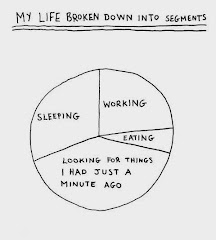Huge. Like an IRS audit.
Lots of questions about everything.
Diagrams of where it hurts and how it feels.
I have an equally hefty envelope filled with my medical records and I have to go to the MRI place and get my film....only so they can compare it to the super duper MRI film they will take there. (And point and laugh at all of us who do not live in SF and have first generation MRI machines).
Oh, and expect to spend four hours MINIMUM.
MY appointment is at 3:30, so we can drive up that day, sit in a hospital all afternoon, spend the night and drive home the next day. Well, I"LL be sitting in the hospital. Mike will be pacing like a caged bear. I am going to send him AWAY as soon as we talk to the doctor (I disremember all the crappy things that happen---like the horses in the ER, the side of the road in flames.....those kind of details). After that, he has to LEAVE. Find a hotel and some real food. I can deal with a lot of things, but being poked and prodded and MRI'd (I hate MRI's. They are like being in a garbage can with apes banging on the outside)....well, I can;t tend to him. It's San Francisco. He can find something to do. It is across the street from the park. He'll be fine.
Oh, here is what I found on the website.
Totally more scary than what I had previously managed to scare myself with.
Brain arteriovenous malformations (BAVMs) are an infrequent but important cause of stroke, particularly in a young population. Current invasive treatment strategies are varied and include endovascular procedures, neurosurgery, and radiotherapy. All of these treatments are administered on the assumption that they can be achieved at acceptably minor complication rates, decrease the risk of subsequent hemorrhage, and lead to better long-term outcomes.
Procedure: invasive therapy [endovascular procedures, neurosurgery, or radiotherapy, alone or in combination]
All interventional procedures are standard of care for the treatment of AVMs. They are not experimental.
Endovascular procedures involve specially designed catheters/tubes position in the small arteries feeding blood to the AVM. The tubes are inserted into an artery in the groin and threaded up through the artery into the brain. Once positioned, the physician injects a special material that changes from liquid to solid very quickly. Once it solidifies, it blocks the artery that is feeding blood to the AVM. (I think it might be Krazy Glue).
Neurosurgery involves the opening of a portion of the skull and the brain's outer lining to get access to the AVM.
Radiosurgery involves high energy radiation (like X-rays) carefully targeted at the brain AVM to shrink it and, in the best results, eventually eliminate the artery-to-vein links and the risk of bleeding.
WHO THINKS THIS STUFF UP?




2 comments:
I don't know who thinks it up, Hon; but I DO know that we are the first generation with long-term survivors of illnesses and conditions.
I have almost no sense of smell. I asked my doctor if it could have been the radiation or the chemo and she said, "We just don't know. People didn't survive before."
Still, not being able to smell is a small price to pay for still walking the planet.
Welcome to the Monkey House.
Sounds so complicated but they know what they are doing, they are at their best with this so be confident that things will go right and you won't have that pain any longer.
Take care!
Post a Comment